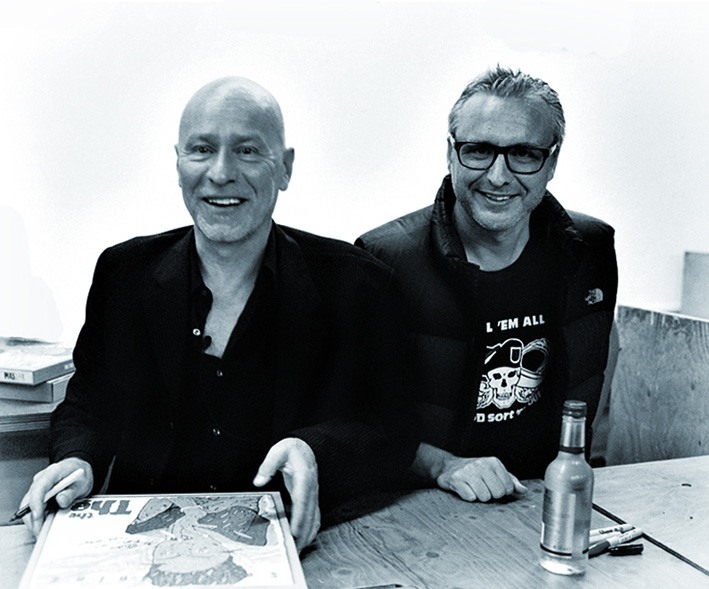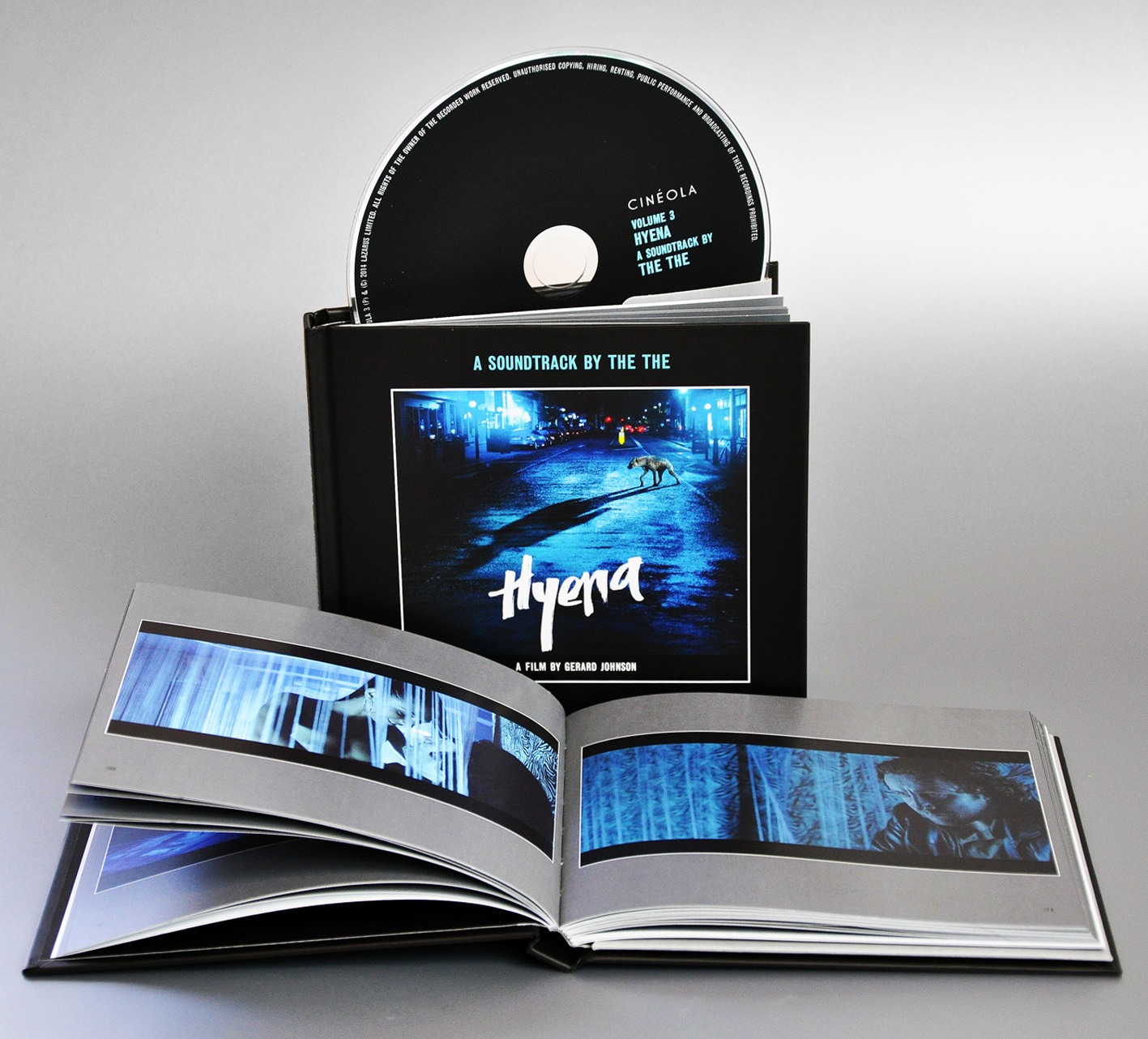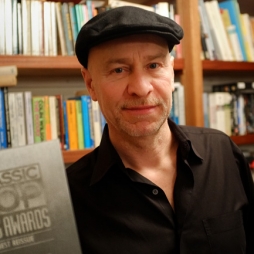
The score to the film ‘Hyena’ was mixed by Matt Lawrence at Miloco.
All the music was composed, written and produced by Matt Johnson (The The), working with Miloco engineers Mark Allaway, Joseph Rogers and Finn Eiles.
Read an interview with Johnson and Lawrence here.
Tell me a bit about the background of the project. How did the idea come about?
ML: My involvement was to mix the score to a film called ‘Hyena’. All the music was composed and produced by Matt Johnson (The The) working closely with the director, Gerard Johnson (Matt’s brother). So the movie was directed by Gerard, and the lead actor Peter Ferdinando is their cousin, making this really quite a unique family setup and following on from the first feature film the three made together ‘Tony’. This score is also the third in Matt’s Cineola series, I’ll let him explain those…
MJ: I’ve long had a fascination with film and television theme music. As a young boy growing up in the 1960s I was a big fan (without being aware of their names at the time) of composers such as Ron Grainer (Dr Who, Steptoe & Son, The Prisoner, Tales Of The Unexpected) and Laurie Johnson (The Avengers, The Professionals Animal Magic).
In the late 1970s, between the ages of 15 – 18, I was fortunate to work in the Soho recording studio of the oldest and largest family owned music library in the world, De Wolfe Music. The Company counted many legendary names amongst its composers including Jack Trombey, Ivor Novello, Stephane Grapelli, Johnny Hawksworth, Tim Souster and countless others. There I learnt a lot about film and television music composition as well as the basics of sound engineering. In the years following that I discovered the works of great soundtrack composers such as David Shire, Roy Budd, Nino Rota, Lalo Shifrin, Neil Hefti, John Barry, Henry Mancini, Bernhard Herrman, Ennio Morricone, Gabriel Yared etc. So film music has always an important part of my life and career and about 10 years ago I formed Cineola as an independent film soundtrack company as a parallel project to The The. In the years since I’ve composed soundtracks for numerous Scandinavian, Turkish, Lebanese and of course British feature films and documentaries. I prefer to work closely with the director so I have a decent amount of control over the soundtrack. Therefore I prefer to work with people I know well and this often means on smaller budget projects than on big Hollywood productions, which I have done incidentally and which I don’t particularly enjoy as the more money involved the more interference in the creative process there is.

Matt and Gerard Johnson
Although I’d been involved at a very early stage of Hyena’s creation, in terms of reading early scripts, meeting some of the actors as they were being cast and working with my brother Gerard on creating a sound palette for the project, there is still always the problem for a composer on most film projects of tight financial restrictions and time deadlines. Hyena was no different. The various elements that make up the audio for a feature film – foley, sound design, ADR as well as music – all have to arrive at the same time from the various studios specialising in each element. It means there is no room for manoeuvre with the deadlines. You just cannot be late.
At the start of such a project you need to put together a team. I have a long association with Miloco going back over 20 years. They used to manage the Garden Studios on my behalf and I’ve worked with quite a few of their engineers over the years and have always found them extremely professional and helpful. Miloco even designed and built Studio Cineola so they are always first port of call.
I had already sketched out on paper the sort of soundtrack I was going to create, using a combination of old analogue equipment retrieved from my storage containers.These days I also prefer to keep things very simple and work 16 track (or maybe 24 if I’m feeling really ambitious!) in order to avoid the ‘option paralysis’ that is often caused by the overwhelming amount of choices available on modern DAWs. I like to work fast, sculpt sounds, make a decision and then capture them rather than piling up more indecision for later by also recording clean or alternate versions. Life is too short to be wasting hour after precious hour agonising over hundreds of digital tracks in the mixing stage.
I employed Mark Allaway, an engineer from Miloco, to help me set up Studio Cineola for the Hyena recording sessions and to take care of some additional engineering duties at the start of the sessions. Mark is a wonderful, positive character, well liked by all who know him and a nice vibe. He also assisted me with the set up of the Time Lag Accumulator. Unfortunately we were hit by a storm of technical problems such as speakers blowing up, multiple computer malfunctions, guitars suddenly picking up all sorts of atmospheric interferences, fuses randomly blowing in various items of important equipment. We had Al Bailey from Grizzly Media, my computer tech support, on speaker phone for almost 48 hours it seems as we tried to unravel these problems. In effect, due to these technical problems, I lost about 1 week out of the already tight 3 week recording schedule.
So, to say things were getting a bit tense is an understatement. Yet it is important to keep a cool head in such circumstances and to view such problems as potential opportunities. In this case it meant not over-thinking and just following my instinct. What followed were probably the hardest recording sessions I’ve done since my first album Burning Blue Soul. I was often working through the night day after day. If there wasn’t such a strict deadline I would never have worked such hours. When the soundtrack was finally recorded I then had to fly to Sweden for 24 hours on urgent family business. Unfortunately for me I picked up a tonsillitis bug on the flight home. I wanted to crawl into bed but the show must go on!
As this was going to be my first 5:1 mixing session I’d asked Nick Young at Miloco who he could recommend as a first rate, highly professional 5:1 mixing specialist. Matt Lawrence was suggested and although Matt was (and still is) incredibly busy and in-demand he very kindly managed to re-arrange another session he was working on to accommodate Hyena. Matt came over to Studio Cineola for a pre-mixing session and I was immediately impressed with his enthusiasm, professionalism and knowledge. He’s also a very warm and friendly person. Despite the agonising sore throat I was finally able to relax as I was confident I was in very good hands indeed.
We mixed at Miloco MusikBox. Our assistant there was the ever-friendly and helpful Joseph Rogers. Due to my agonising throat condition I often had a glass of Lemsip in one hand and a glass of Codeine in the other. We worked incredibly hard for the three and a half days of mixing, often going late and into the early hours of the morning and I was more than a little impressed that at the end of an exhausting day / night’s mixing that Matt would then climb on his bicycle for a long ride home through the deserted streets of London. All I was good for was a taxi home and a slump into bed.
Due to the extreme time pressures involved in the 5:1 mixes Matt and I were not able to give our full attention to the stereo mixes that needed to be created for the commercially available album version of Hyena. Therefore I remixed a number of these tracks at Studio Cineola with Finnbar Eiles, a veteran Miloco engineer who I have worked with for a number of years. Finnbar is a very calm, confident and reassuring presence behind any mixing desk and as usual, I was very happy with the finished result.
ML: The project therefore can be broken into three sections :
The Composition / Recording –
Matt wrote and composed the music and played everything himself, it was recorded at his place in East London: Studio Cineola. Matt J engineered the bulk of the recording and Mark Allaway (Miloco) provided additional engineering duties.
The Film Cue Mix Sessions –
I mixed the 5.1 and Stereo Cues to picture with Matt at Musikbox.
The full length stereo ’songs’ for the Cineola CD –
Matt called upon Miloco Engineer Finnbar Eiles to help complete this stage and these were mixed at Studio Cineola. Finnbar had also mixed Tony and Moonbug, volume 1 and 2 respectively in the Cineola series.
So my job was helping Matt J to edit and stitch together the various audio beds and sonic spectrums that he had been composing and recording. These had to work as part of a full 5.1 surround music mix, and we edited and mixed these cues to picture. It was Matt’s first foray into 5.1 mixing and he brought me on board as I have considerable experience in this area and came recommended by Miloco. I have over 10 years’ experience with 5.1 working on international film and surround concert mixes and am known for delivering projects within challenging deadlines.
Were there any submitted recordings that were strange or that stood out?
ML: Matt deliberately gave himself limitations in the way he worked on this project and committed to sounds that he felt were right at the time (for example, he would never record a ‘clean’ signal for safety).
The recordings Matt made were usually no more than 16 or so stereo sounds for each cue, however because they were so carefully crafted, they packed a massive sonic punch.
What stood out was the obviously analogue feel to a lot of the sounds, They had that depth and personality that doesn’t yet seem to be achieved in the digital world. As Mark (Allaway – recording Engineer) seemed to have the ability to make things break or behave strangely in his presence on that session, this may have helped in giving a unique personality to the recordings! These crazy guitar sounds and analogue synths were complimented nicely with modern soft synths and high-end digital effects.
We had 18 or so cues to mix, and there was quite a range of recordings within these cues. As with most movie scores there is a repeating motif (in this case, “Michael’s Theme – named after the lead character) – which appeared throughout the film with varying moods and instrumentation, what came in and around this was pretty diverse.
I particularly remember the long first Cue a Symphonic part building through long scene (using Time lag ACCUMULATOR), a pulse begins (mini moog bass – sequenced with Doepfer Dark Time.), then a Novachord opens up in an eerie way (organ/synth) with a vibrato quality.
I remember this not only because the music segued in an interesting way, but because it was the first of the visuals I saw – I was shocked by the way the scene unfolded and it didn’t get any less brutal for the next few days!
I loved the way the Fairfied Circuitry pedal was used when the main character had overstepped his invitation and gone exploring for evidence – it just adds SO much tension, especially as he comes face to face with a gangster in a corridor – check the crazy 5.1 panning as he flees the scene!
I was especially pleased with the way the last cue sounded, it builds and builds in the final scene,“killers and concubines” (using white noise from mini moog through the Keeley Phaser), also comprising of a low guitar (Gated through the tremolo – Keeley Phaser)
There is again a lot of 5.1 panning and we pushed the LFE Channel (in fact EVERY channel!) just as far as we possibly could to build this crescendo to an ear-splitting climax – it really is a great moment, the volume of the ENTIRE music bed was referenced very carefully against these last few seconds for maximum effect.

The Hyena album is now available as Cineola Volume 3 as a CD/Book here.
What was the mix process like and where did it take place?
ML: Intense with late nights! We completed a full 5.1 surround mix within a tight deadline. In order to achieve this it soon became apparent that we would have to install a second protools system in the lounge – mix assistant Joseph Rodgers ran our new ’studio B’ – it was all hands on deck!
Although we created a stereo fold-down mix at the time (using static fold-down coefficients mixed with a surround plugin running), upon listening back we returned for a separate stereo session to give these mixes a little more detail and care.
We mixed using a combination of amazing analogue gear (Noteably : Chiswick Reach valve compressor / EMT Plate / Analogue filters and Neve Line amps) with a great deal of the fine tuning of the mix done ‘in the box’ (Miloco have a very comprehensive list of Plugins).
As the automation was all in the box we were able to keep all the cues running live and quickly jump between them, especially if we found an effect or sonic gem that we thought might work brilliantly on a cue we’d already ‘completed’.
I love working in this way, especially in surround. Once you have printed your first master mix you are committed to that 5.1 image for the rest of the project, sometimes you want to change this a little as you get more of a feel for the film. I know that with Hyena it was really handy to be able to tweak the level of the LFE or surround channels even quite late in the process.
Can you tell me a bit about the vibe of Musikbox?
ML: Musikbox was fantastic – we worked hard long hours to make the schedule, Matt J was pretty Ill at the time, I don’t know how he managed to stay focussed. The lounge at (The now sadly closed!) Musikbox made for a great place for Matt J to chat further about the music with director Gerard whilst keeping half an ear on what I was up to in the control room. Until it became studio B that is…..
Can you run me through the technology set-up?
ML: Sure,
Recording :
A lot of kit that Matt had owned since 1980s was brought out and put into service.
2 x Gibson Echoplex – based on a recreation of the ’Time Lag Accumulator’ Terry Riley (looping device later dubbed ‘Fripatronics’ by Robert Fripp) – A looping device that enables you to slow down and speed up the tape, and layer the sounds in the same way you could do with tape loops.
All guitars parts were played on a Fender Stratocaster and occasionally a Gibson SG and Fender Bass Vl.
Either DI’d with active Radial JDV or sent through the Radial X-Amp into a vintage Vox AC15 or foot pedals.
Pedals included – Fairfield Circuitry (ripping velcro sound) , Z-Vex Fuzz Factory, Diamond Memory Lane 2, Empress Tremolo, Keeley Phaser.
Analogue synths – Mini Moog (rack), Roland SH 101, Electro-Harmonix Bass Micro Synth sequenced with Doepfer Dark Time.
Soft Synths were used for some of the percussion and drones.
This was coupled with some more modern digital devices such as Bricasti M7, Eventide H8000, Thermionic Culture Vulture, Mutronics Mutator
Other Studio Cineola recording kit :
Neve V rack (rack mounted Pre’s from a Neve V series console)
Pair Manley Vox Box
Pair Urei 565T Filter Set (notch filters)
GML 8200
Pair Roland 555 Chorus Echos
Monitoring – Focal Twins
Mixing :
5.1 Setup Dynaudio Bm-15s
Audient 5.1 monitor controller
Neve VR Console
2xProtools HDX rigs
Class A Monitor for picture
Distressors, Urei 1176’s, GML 8200, Chiswick Reach Valve compressor, Roland Dimension D, EMT Plate, Lexicorn 224
Plugins – Waves Platinum, Soundtoys bundle
Matt J, did it work out for you?
MJ: I was very happy with all the hard work Matt L and the rest of the Miloco team put in and the end result shows. I was delighted, and of course more importantly the film’s director Gerard was absolutely thrilled too.
A double-disc, gate-fold sleeve vinyl version is available through the prestigious Death Waltz Recording Company.
Jake Young



Stay in the loop
Follow @milocostudios
Subscribe to Miloco News